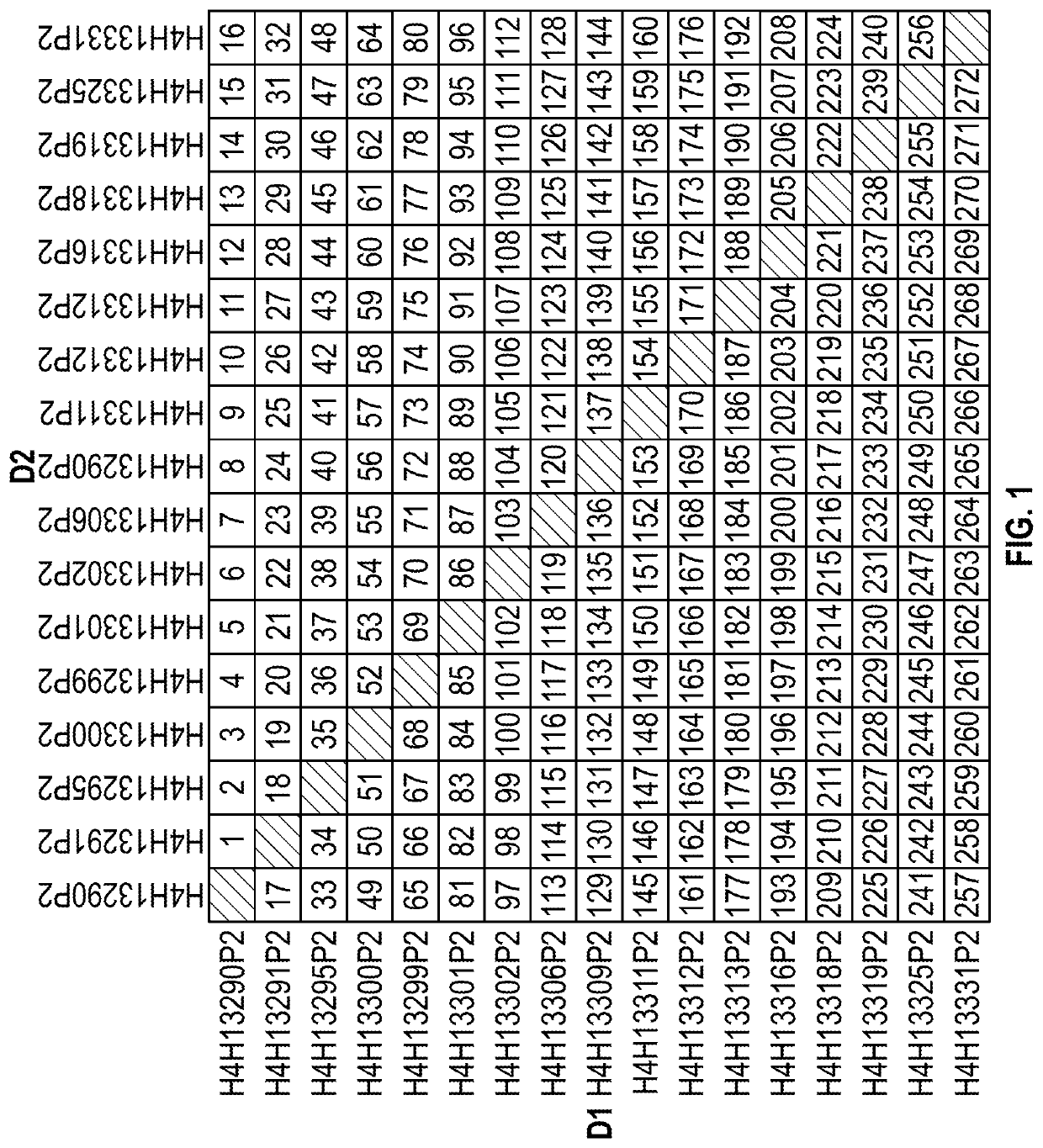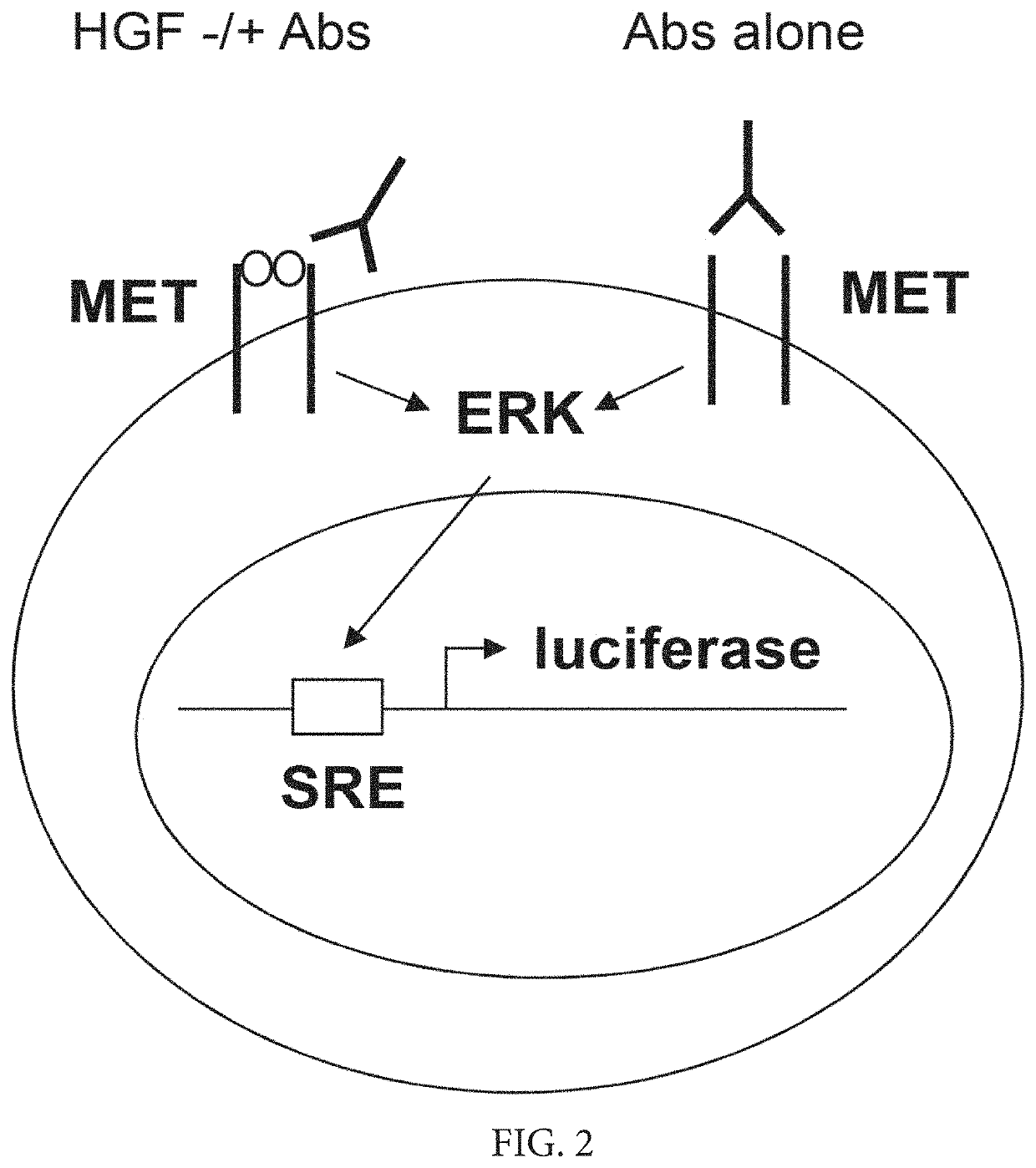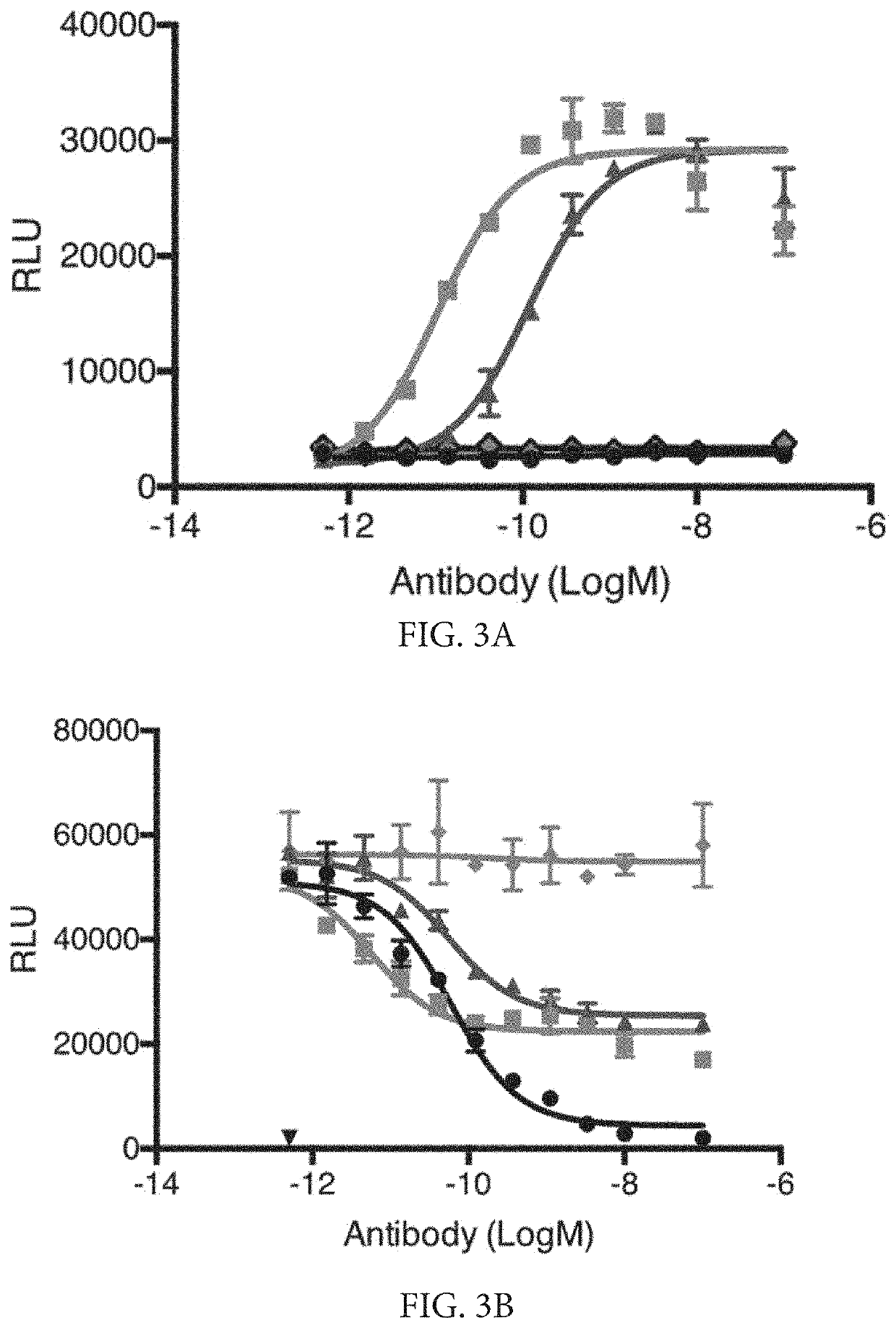Methods of treating ocular cancer using Anti-met antibodies and bispecific antigen binding molecules that bind met
a technology of anti-met antibodies and bispecific antibodies, applied in the field of anti-met antibodies, bispecific antibodies, and antigen-binding fragments, can solve the problems of antibodies blocking ligand-dependent met signaling, poor long-term prognosis, and death in more than 50% cases
- Summary
- Abstract
- Description
- Claims
- Application Information
AI Technical Summary
Benefits of technology
Problems solved by technology
Method used
Image
Examples
example 1
n of Anti-MET Antibodies
[0275]Anti-MET antibodies were obtained by immunizing a genetically engineered mouse comprising DNA encoding human immunoglobulin heavy and kappa light chain variable regions with an immunogen comprising recombinant human MET extracellular domain fused to human Fc (R&D Systems, Catalog #358-MT, Minneapolis, Minn.). The mice used for the immunizations express a “universal light chain.” That is, the antibodies produced in this mouse have different heavy chain variable regions but essentially identical light chain variable domains.
[0276]The antibody immune response was monitored by a MET-specific immunoassay. When a desired immune response was achieved splenocytes were harvested and fused with mouse myeloma cells to preserve their viability and form hybridoma cell lines. The hybridoma cell lines were screened and selected to identify cell lines that produce MET-specific antibodies. Using this technique several anti-MET chimeric antibodies (i.e., antibodies posse...
example 2
Light Chain Variable Region Amino Acid and Nucleic Acid Sequences
[0278]Table 1 sets forth the amino acid sequence identifiers of the heavy and light chain variable regions and CDRs of selected anti-MET antibodies described herein. (As noted above, all antibodies generated in Example 1 possess the same light chain variable region, and thus the same light chain CDR sequences as well). The corresponding nucleic acid sequence identifiers are set forth in Table 2.
TABLE 1Amino Acid Sequence IdentifiersSEQ ID NOs:Antibody DesignationHCVRHCDR1HCDR2HCDR3LCVRLCDR1LCDR2LCDR3H4H13290P22468138140142144H4H13291P210121416138140142144H4H13295P218202224138140142144H4H13299P226283032138140142144H4H13300P234363840138140142144H4H13301P242444648138140142144H4H13302P250525456138140142144H4H13306P258606264138140142144H4H13309P266687072138140142144H4H13311P274767880138140142144H4H13312P282848688138140142144H4H13313P290929496138140142144H4H13316P298100102104138140142144H4H13318P2106108110112138140142144H4H1...
example 3
lasmon Resonance Derived Binding Affinities and Kinetic Constants of Human Monoclonal Anti-MET (Monospecific) Antibodies
[0280]Binding affinities and kinetic constants of human anti-MET antibodies were determined by surface plasmon resonance (Biacore 4000 or T-200) at 37° C. The anti-Met antibodies tested in this example were bivalent monospecific binders of MET. The antibodies, expressed as human IgG4 (designated “H4H”), were captured onto a CM4 or CM5 Biacore sensor surface derivatized via amine coupling with a monoclonal mouse anti-human Fc antibody (GE, BR-1008-39). Various concentrations of soluble monomeric (human (h) Met.mmh; SEQ ID NO: 152; Macaca fascicularis (mf) Met.mmh; SEQ ID NO: 154) or dimeric (hMet.mFc; SEQ ID NO: 153) Met proteins were injected over the anti-MET-antibody captured surface at a flow rate of 30 or 50 μL / minute. Association of hMET.mmh or hMET.mFc to the captured monoclonal antibody was monitored for 4 or 5 minutes and the dissociation of hMET.mmh or hME...
PUM
| Property | Measurement | Unit |
|---|---|---|
| dissociation constant | aaaaa | aaaaa |
| size | aaaaa | aaaaa |
| kinase catalytic activity | aaaaa | aaaaa |
Abstract
Description
Claims
Application Information
 Login to View More
Login to View More - R&D
- Intellectual Property
- Life Sciences
- Materials
- Tech Scout
- Unparalleled Data Quality
- Higher Quality Content
- 60% Fewer Hallucinations
Browse by: Latest US Patents, China's latest patents, Technical Efficacy Thesaurus, Application Domain, Technology Topic, Popular Technical Reports.
© 2025 PatSnap. All rights reserved.Legal|Privacy policy|Modern Slavery Act Transparency Statement|Sitemap|About US| Contact US: help@patsnap.com



